Troubleshooting Volkswagen Transmission Problems
Volkswagen is a popular car brand with a reputation for quality and reliability. However, like any vehicle, Volkswagen cars are not immune to problems. One of the most common issues that Volkswagen owners face is transmission problems. A faulty transmission can cause a range of issues, from poor acceleration to complete transmission failure. In this article, we will discuss some of the most common Volkswagen transmission problems and offer advice on how to diagnose and fix them. Whether you are a Volkswagen owner experiencing transmission problems or simply interested in learning more about the issues that can affect these vehicles, this article is designed to help you understand the most common transmission problems that Volkswagen owners face.
This guide goes over common problems that affect Volkswagen (VW) transmissions, including the DSG gearbox and 01M transmission, and how to troubleshoot them. Don’t panic if your Volkswagen transmission is no longer shifting, shifts hard, or is stuck in gear. You will learn about transmission problems such as faulty transmission range sensors, reset Volkswagen transmission adaptive settings, check transmission fluid levels, and retrieve transmission diagnostic trouble codes from the Transmission Control Module (TCM).
Symptoms
Common symptoms of Volkswagen transmission problems.
- VW transmission won’t shift.
- Stuck in limp mode
- Harsh shifting
- No Reverse
- The transmission won’t go into gear.
- Stuck in 2nd
- Not shifting into 3rd
- Noise such as whining, humming, or clunking.
- Won’t shift out of Park
- Stuck in Park or Reverse
How do I know if my VW transmission is bad?
Several signs can indicate a transmission problem in a Volkswagen vehicle. Some of the most common symptoms of a bad transmission include:
- Slipping gears: If the transmission is slipping in and out of gear, it may be a sign of a problem with the clutch, gears, or internal components.
- Delayed engagement: If the transmission takes longer than normal to engage when shifting into gear, it may be a sign of a problem with the transmission fluid, pressure control solenoids, or internal components.
- Hard shifting: If the transmission feels rough or jerky when shifting, it may be a sign of a problem with the gears, synchronizers, or internal components.
- Leaking transmission fluid: If you notice a puddle of red or brown fluid under your vehicle, it may indicate a leak in the transmission.
- Warning lights: Many modern VW vehicles have a transmission warning light on the dashboard. If this light comes on, it could indicate a problem with the transmission and should be investigated as soon as possible.
- Unusual noises: If you hear whining, humming, or clunking noises while driving, it may be a sign of a problem with the transmission.
- Burned smell: If you smell burning oil or transmission fluid, it could indicate a problem with the transmission.
- Check Engine Light: if the check engine light comes on, it’s worth checking the vehicle codes to investigate transmission-related issues.
It’s important to note that some of these symptoms may also be caused by other problems, such as a failing clutch or an issue with the drive axles. Therefore, taking your vehicle to a qualified VW mechanic who can diagnose and fix the issue is always recommended.
Common Problems with VW Transmissions
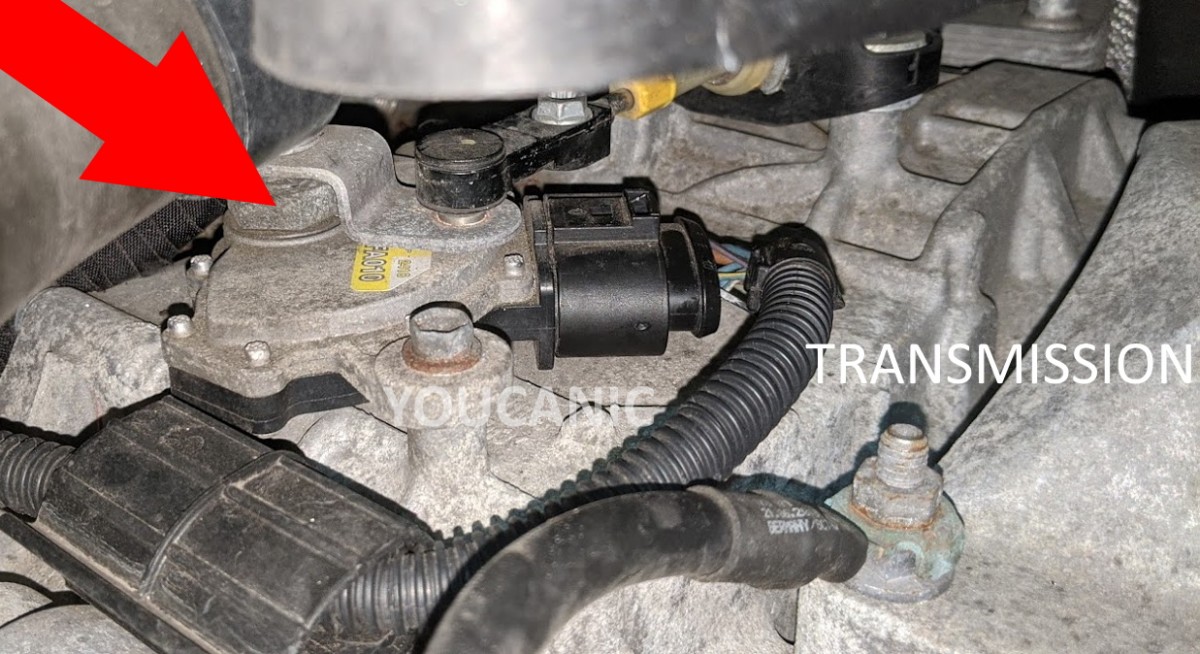
Volkswagen transmission problems such as erratic shifting, limp mode, no shifting, and no reverse can be due to something as simple as low transmission fluid level.
These symptoms can also indicate a serious problem: faulty valve body, clogged transmission filter, bad solenoids, VW mechatronic unit, and faulty torque converter. Common problems that affect Volkswagen transmissions:
- Transmission Range Sensor (F125) The Volkswagen transmission range sensor serves many functions to determine the gear the driver has selected ( P R N D ). The transmission range sensor sends the signal to the Powertrain Control Module (PCM). The transmission range sensor can fail, causing many issues, such as the vehicle going in limp mode, the transmission not shifting when placed in Drive or Reverse, and the engine may not start because the PCM can not detect the shift, Park.
- Low transmission fluid level – A low transmission fluid level can cause many issues, including erratic shifting, no shifting, delayed shifting, strange grinding noises, limp mode, and sometimes, a check engine light.
- Faulty Torque Converter – This can cause the VW transmission to slip in all gears, shudder, and overheat.
- Worn Bands – Can cause delayed shifting, shifting at high RPM, harsh shifting, VW won’t move, and no reverse gear. A more common issue on high mileage VW vehicles.
- Shifter—A faulty shifter or shifter cable can cause the transmission to get stuck or not shift into the selected gear.
- Mechatronic Unit / Valve Body – The valve body is complex and can fail in many ways; the most common symptom is that your VW won’t shift or go in gear. Depending on the competent that fails, it can cause limp mode, check engine light, the transmission may not shift past 2nd or 3rd gear or harsh shifting between gears.
- Vehicle Speed Sensor – If your Volkswagen has developed a harsh shift between gears or is stuck in emergency mode (limp mode), the vehicle speed sensor (VSS) may be the problem. A signal from the VSS is sent to the Powertrain Control Module (PCM), and the loss of the signal can cause one or more problems.
- Brake Light Switch – A faulty brake light switch can prevent the shifter from moving out or back in Park. The shifter can not be moved; the transmission won’t go into gear. Manually override the shifter and move the gear selector to Drive. If VW transmission shifts properly when you manually release the shifter from Park, the problem in most cases is the brake light switch or the shifter module itself.
- Low Battery Voltage – In rare cases, the low voltage can trigger Volkswagen’s automatic transmission to get stuck in limp mode. This issue mainly affects newer VW models.
- PCM / TCU / ECU Software Issue—Software issues can cause erratic shifting or downshifting. Volkswagen’s transmission may shift late or downshift unexpectedly. Volkswagen has issues with PCM software updates that fix such shifting problems for models, which is a common problem.
- Wire harness – Damages of wire harnesses from ECU / PCM to the transmission housing can cause shifting problems. For example, your Volkswagen may not shift or go in gear. It is a costly problem to fix, but luckily, it is not a common problem with VW transmissions.
Other issues that may cause VW transmission problems include faulty throttle body, dirty transmission filter, bad trans fluid pump, and MAF sensor.
VW & Audi DSG Transmission Problems
Some common problems with the Direct Shift Gearbox (DSG) transmission used in Volkswagen vehicles include:
- Mechatronics Unit Failure: The mechatronics unit, which controls the transmission’s shifting, can fail to result in transmission issues such as harsh shifting, slipping gears, and loss of power.
- Clutch Wear: The dual-clutch system in the DSG transmission can wear out prematurely, resulting in slipping gears and difficulty shifting.
- Pressure Control Solenoid Failure: The pressure control solenoids regulate the transmission fluid pressure and can fail, leading to shifting issues and transmission failure.
- Oil Pump Failure: The oil pump keeps the transmission lubricated, and a failure can damage the transmission’s internal components.
- Software Issues: The DSG transmission is controlled by software, and a software malfunction can cause shifting problems, transmission warning lights, and other issues.
- Low Transmission Fluid: The DSG transmission requires a specific type of transmission fluid, and running low on fluid can cause serious problems with the transmission.
- Sensors Malfunction: The transmission relies on various sensors to monitor the vehicle’s stability and handling. If any of these sensors fail, the transmission can malfunction.
It is important to note that these are common issues but not an all-inclusive list. It is always recommended that you take your vehicle to a qualified VW mechanic who can diagnose and fix the issue.
Troubleshooting VW Transmission Problems
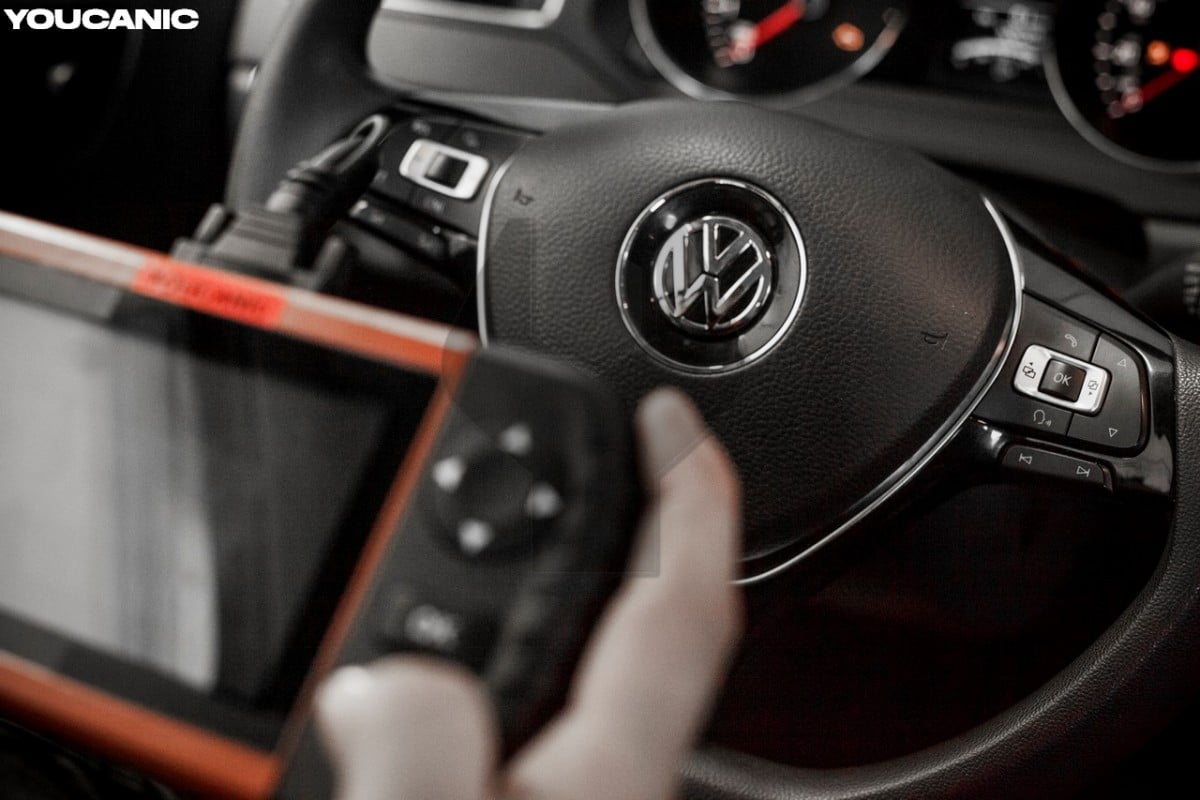
There are many checks and steps you can perform yourself to narrow down the problem or, in some cases, even fix it. The following steps will help you troubleshoot and isolate Volkswagen transmission problems. Volkswagen transmissions control unit (TCU) monitors the driver’s driving habits and shifts early or late, depending on the driver’s driving style. Fault codes stored in the TCU can be read with a full system diagnostic scanner.
Eventually, the adaptation settings stored in the Transmission Control Module (TCM) can become out of sync, resulting in erratic shifting. Resetting VW transmission adaptive settings will often improve shifting, especially erratic shifting.
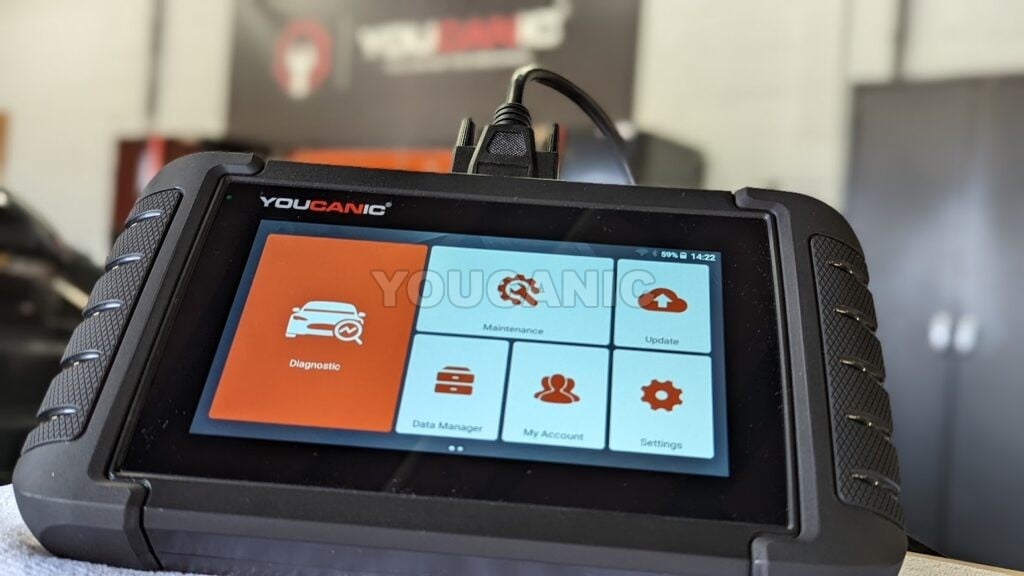
The best way to reset the transmission and ECU to factory settings is to use a VW Transmission scanner or if one is not available, try the instructions below.
How to Reset VW Transmission Adaptive Settings
Method 1
- Turn the ignition on without starting the engine. If your VW has started/stopped, press it twice without pressing the brake pedal.
- Immediately press the gas pedal to the floor and keep it pressed for twenty seconds.
- Release the gas pedal.
- Turn the ignition off and back on, and immediately start the engine.
Method 2
- Set the parking brakes.
- Turn ignition on the ignition but do not start the car.
- Move the gear selector from Park to Drive.
- Press the gas pedal down to activate the kick-down switch.
- Hold the gas pedal pressed down for thirty seconds.
- While still holding the gas pedal down, move back to Park.
- Turn the key off, then back on, and start the car.
Method 3
- Turn the key to the 1st position
- Press the gas pedal to the floor twice within five seconds to activate the kick-down switch.
- Release the gas pedal and immediately start the engine.
Trying all three methods does not cause any problems. The goal is to make the transmission reset (forget your driving habits) and reset the gear shifts to factory settings. Volkswagen’s automatic transmission can also be reset with a Transmission Scanner such as VAG-COM. This procedure does not work on all models. It will not cause any problems.
It will only reset the shift range on applicable models and bring it back to normal. If your VW transmission is not shifting, shifts late, or slips, resetting the transmission adaptation will not fix the problem. After resetting the VW transmission, take the vehicle for a test drive. Check the transmission fluid level if you still have problems with your VW transmission.
How to Check Volkswagen Transmission Fluid Level
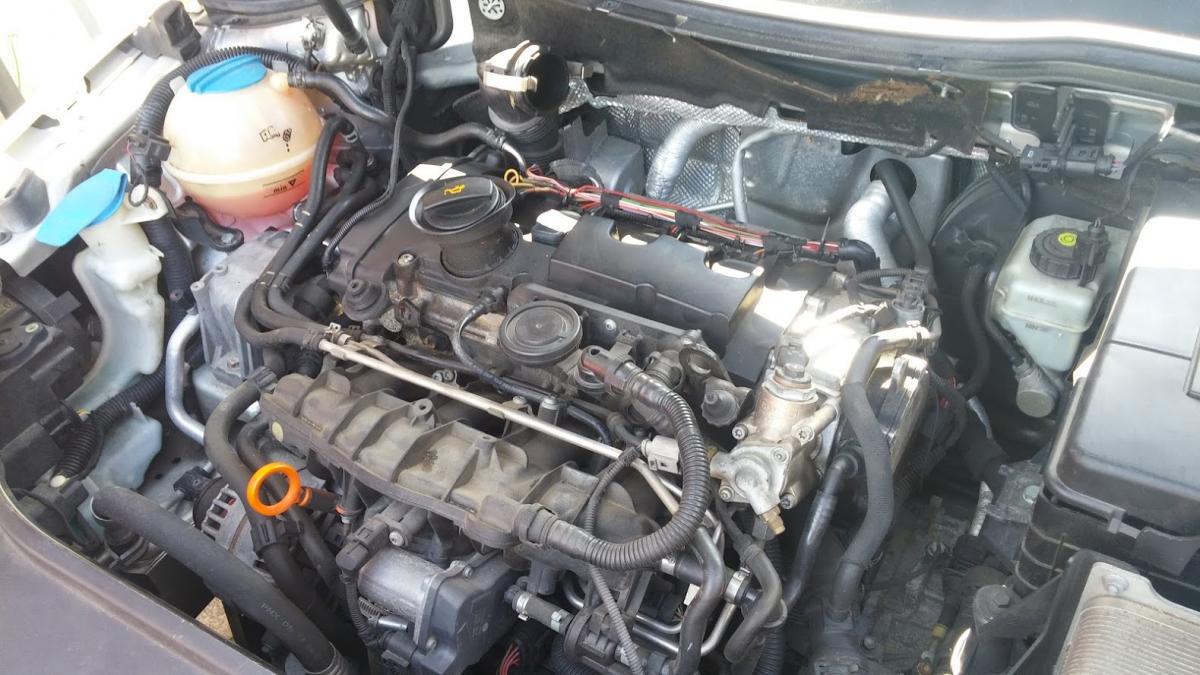
Checking the transmission fluid level is very easy if your Volkswagen has a transmission dipstick; not all models do. Do not confuse the oil dipstick with the transmission dipstick.
- Park the vehicle on level ground.
- Set the parking brakes and shifter in the Park.
- Pull the hood release and open the hood.
- Locate the transmission dipstick.
- Remove the dipstick and clean it with a clean cloth.
- Reinsert the dipstick in the transmission dipstick tube. Ensure the transmission dipstick is fully inserted, then remove it.
- Look carefully at the dipstick and determine the current transmission fluid level. The level should be between MIN and MAX marks for the COLD (lower) markings.
- If the level is low, add transmission fluid level.
- Drive the vehicle for 15 minutes and select all the gears manually.
- Repeat the procedure once the transmission warms up, but this time, the level must be between the MIN and MAX marks for the HOT (higher) markings.
If the transmission fluid level is low, add the recommended Volkswagen transmission fluid to bring the fluid level between the MIN and MAX marks.
If the dipstick is not present, the vehicle will need to be raised on a lift, and the level can be checked by removing the fill plug.
The following video shows how to change the VW transmission fluid and check the fluid level.
Only use the recommended VW transmission fluid type recommended for your vehicle.
Read Transmission Fault Codes
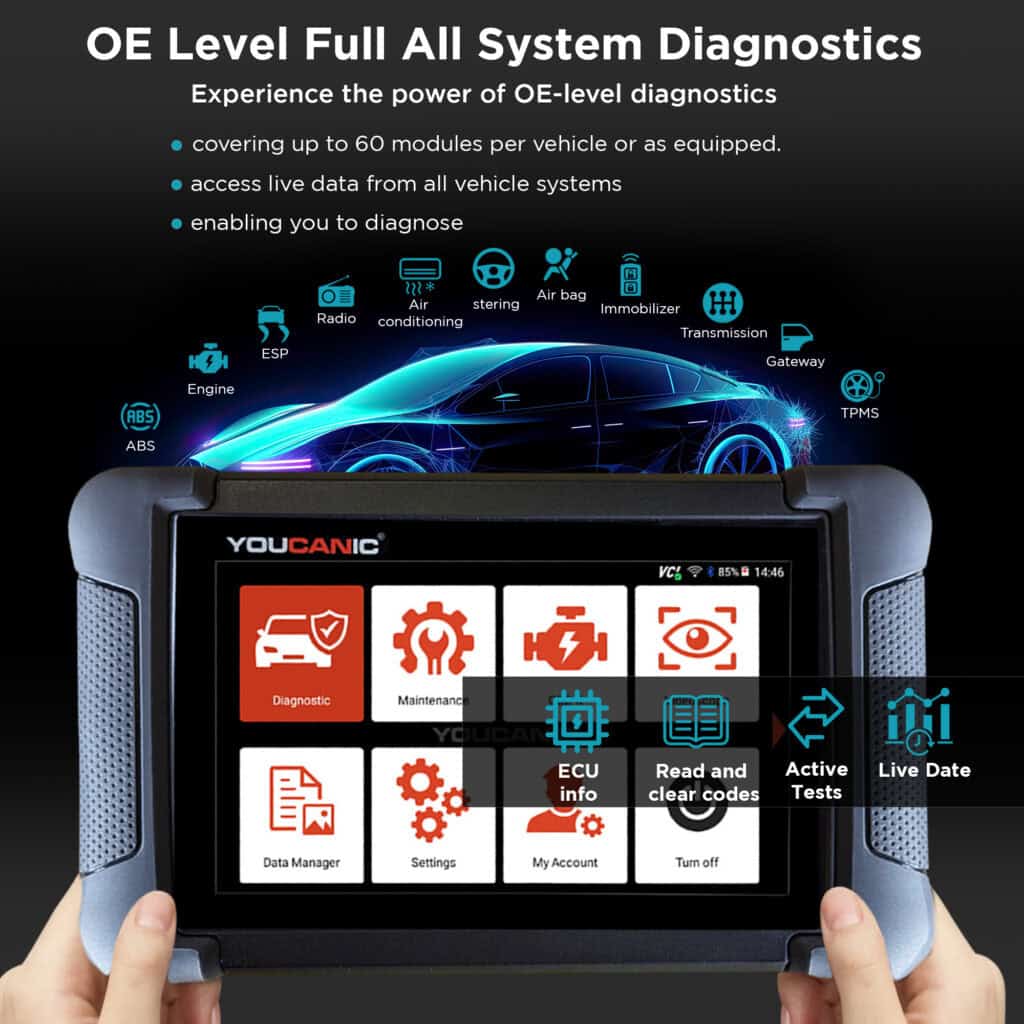
The next step in diagnosing a Volkswagen transmission is to read fault codes from the transmission control module, or what is known as the TCU. To read these codes, you will need a VW Transmission Scanner. The YOUCANIC Full System Scanner can read codes through every control module of a Volvo vehicle. Basic code readers can not retrieve fault codes from the Transmission Control Module and will not show a fault code.
- Park the vehicle and turn off the ignition—set parking brakes.
- Locate the diagnostic port under the dashboard, driver’s side.
- Plugin, your OBD-II scanner, then turn on the ignition without starting the engine.
- The scanner will turn on. Allow it to communicate with the vehicle. Select Volkswagen and then your particulars.
- Select Control Units, then Transmission.
- Select Read Fault Codes from the main menu.
Transmission Stuck in Limp Mode
If your Volkswagen gets stuck in limp mode while you are on a long trip, the first thing that you should do is pull over, turn off the engine, wait a minute, and restart it.
In many cases, restarting the engine will allow the ECU to reset and normal transmission functionally to return. Drive with caution and avoid quick accelerations even if the transmission shifts properly. Has the transmission been inspected at your earliest convenience to ensure there are no underlying problems, such as low transmission fluid level or fault codes?
Check For Recalls
Check if open recalls or Technical Service Bulletin (TSB) for your Volkswagen apply to the transmission. Volkswagen dealers perform recalls free of charge. Visit our Check Recalls page to see if a recall exists on your vehicle.
Call your local Volkswagen dealer to find out if Volkswagen has issued a Technical Service Bulletin (TSB) for your vehicle. Volkswagen TSBs for the transmission update the ECU and PCM software. TSBs typically program the shift solenoid operating range, improving shift quality.
Troubleshooting VW Transmission Problems by Symptoms
This guide overviews all Volkswagen automatic transmission problems, including vehicles with DSG gearbox and 01M transmission.
The automatic transmission goes into limp mode or gets stuck in high gear.
VW vehicles from the mid-2000s, including Passat and Vento, can experience shift issues. The most common problem is the transmission going into limp mode (safe mode) and staying stuck in gear. Warnings may accompany this on the dashboard, including the check engine and brake light staying on.
Possible causes
- Water in the passenger footwell short-circuits the TCU under the carpet. Check for any traces of water and remedy the cause, which is usually a clogged drain. Dry out TCU and all the connecting wiring.
- The coolant in the passenger footwell was caused by a leaking cabin heater. Same as above.
- Damaged TCU connection or a loose pin. Check the condition of the connector and if it sits firmly. Check if all pins are firm and if there is no corrosion.
Violent downshift from 3rd or 4th to 1st
In some cases, the automatic transmission can get jammed and struck while shifting from the 3rd to the 4th. As a result, there will be an unexpected downshift into 1st gear. When this happens, the car will suddenly decelerate, which can be very dangerous.
Possible causes
- Failed solenoid N89, which actuates the 3rd to 4th gear shift. This is usually an internal mechanical failure and might not trigger any codes. Replacing the affected solenoid solves the problem.
Shifting to slow or not shifting into gear
All higher-mileage VW cars with automatic transmissions can experience shifting issues, showing delayed and unusual gear changes or a lack of downshifts when trying to accelerate.
Sometimes, it will not shift to R or D. The problem can be constant or intermittent; sometimes, it may trigger a warning light and gearbox limp mode.
Possible causes
- The faulty selector lever position sensor can cause delays when engaging R or D and sending the gearbox into limp mode. The operation of this sensor can be monitored using a Volkswagen diagnostic tool.
- Shift solenoids that are faulty or clogged. If the fault is electrical, it may trigger a check engine light. Mechanical issues and clogged solenoids will rarely result in a check engine light.
- Check the transmission fluid level and top it off if needed. If you don’t know when it was changed last time, consider replacing it with a filter.
Jumping out of gear while driving
Some particular 2008-2009 cars with DSG transmissions can jump out of gear and neutral while driving. Depending on the circumstances, the re-engaging drive may or may not be possible. In most cases, this will trigger a warning light, usually in the form of an illuminated ‘PRNDS’ symbol on the dashboard.
Possible causes
- A gearbox temperature sensor that gives inaccurate readings. This causes the transmission to slip and consequent shifting issues. Although these sensors should have been replaced during a recall, check if your vehicle was affected by calling your local Volkswagen dealer and providing the VIN.
Juddering and shaking at idle or when shifting gears
Cars with DSG transmissions can suffer from various types of juddering. It may happen immediately after startup or while idling and is usually accompanied by a loud clattering noise. Another possible scenario is juddering during gearshifts, most noticeable in low gears.
Possible causes
- Worn dual-mass flywheel, which has too much play in it. This causes a metallic rattle while idling. Check the flywheel condition and replace it if there is any movement between the two plates.
- A worn dual-clutch assembly as a result of normal wear-and-tear. Although repair kits allow partial repair, replacing the whole clutch assembly is usually the best solution.
- Broken or worn engine or gearbox mounts. This allows excessive movement, causing the engine and gearbox to jump when pulling off from a standstill.
DSG transmission going into limp mode
Cars with DSG transmissions can go into limp mode, which stays stuck in third gear. There will be warnings on the dashboard in many cases, such as a flashing ‘PRND’ light. This happens; there will be a stored code that will help track the problem.
Possible causes
- If codes mention ‘clutch limits’ or ‘clutch adaptation,’ your clutch may be worn. However, before replacing it, you may try resetting the gearbox. This can be done by a VAG diagnostic tool or by using the procedure described above.
- Various sensor failures, such as temperature sensors. Check the suspected sensor and replace it if needed.
- Mechatronic unit failure. This will usually trigger multiple codes, including sensors and implausible gear ratios. Mechatronic units are not serviceable and can be replaced or repaired by a specialist.
The problems described here affect many Volkswagen models, including VW Jetta, Arteon, Golf, Bora, Atlas, Tiguan, Passat, Beatle, and Routan, which apply to DSG gearbox 01M transmission.
Troubleshooting a VW transmission problem can be challenging. While checking the basics, reading the codes, resetting the VW transmission, and checking transmission fluid levels are DIY tasks, in-depth troubleshooting should be performed by an auto mechanic, VW dealer, or expert who offers VW repair service.
VW Trans. in Emerg. Mode. You Can Continue Driving

“VW Trans in Emerg Mode” typically refers to a problem with the transmission in a Volkswagen vehicle that has caused it to enter a “limp mode” or “emergency mode”. This mode is designed to protect the transmission from further damage and allow the driver to safely get the vehicle to a service center for repairs.
When a Volkswagen transmission enters emergency mode, it may display a warning message on the dashboard or come on the check engine light. The vehicle may also experience a loss of power or acceleration, and the transmission may not shift correctly or be stuck in one gear.
There are a number of reasons why a Volkswagen transmission may enter emergency mode, including:
- Low transmission fluid levels
- A faulty transmission sensor or solenoid
- A damaged transmission control module (TCM)
- Electrical issues or wiring problems
- Mechanical problems with the transmission, such as worn or damaged components.
If your Volkswagen transmission has entered emergency mode, it is important to have it diagnosed and repaired as soon as possible. Continuing to drive the vehicle in this state could cause further damage to the transmission, resulting in more costly repairs. It is recommended to read the fault codes from the transmission control unit and fix any underlying issues.
Frequently Asked Questions
How do you check a VW transmission fluid?
Locate the Dipstick for the Transmission Fluid.
Pull the dipstick and check the fluid level on the tip of the dipstick.
Inspect the color of the transmission fluid.
How do you diagnose transmission problems?
These are some possible signs that your VW transmission is bad:
Transmission Fluid is Leaking
Delayed Shifting or Missing Gears
Transmission Slipping
Transmission won’t engage
The vehicle has no power
How do I know if my VW transmission is bad?
Dark Transmission Fluid.
A Burning Smell on Transmission.
Transmission Shifting Out of Gear.
Squealing Noises Coming From the Transmission.
We hope you find the Troubleshooting Volkswagen Transmission Problems guide helpful. Check these troubleshooting and repair guides for more help on your Volkswagen.





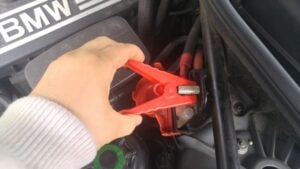
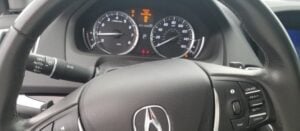
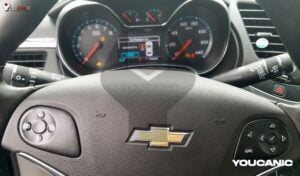

There’s no dipstick for a dsg transmission.
Our 2011 VW Jetta with manual transmission is difficult to shift into first gear, it often goes into third gear instead.
I recently purchased a brand new Tiguan in February 2023, and unfortunately, I’ve been experiencing an issue that concerns me. On two separate occasions, while stopped on a flat surface, I released the brake and pressed on the accelerator, but the car unexpectedly went backwards while still in drive mode. After quickly stopping the car, it went backwards three to four times before moving forward again.
I took the car to Volkswagen for diagnostics, but was told that the computer showed no issues and they couldn’t diagnose the problem. However, I am still concerned about the safety of the vehicle, and I would appreciate any ideas you may have on what could be causing this issue and how it can be properly diagnosed.
I’ve been driving for many years and I have never experienced anything like this before, especially with a brand new car.
Depends on where they purchased it from. It usually takes about 3 to 5 days to get it if you are in the US. I would call them every day to get an update on the repair. That will push them to get it done quicker at least.
Hi I have a 2013 VW CC . I’m having to have the entire transmission replaced on it. I took my car to the mechanic over two weeks ago. They finally called me about a week and a couple days ago saying they had to order the transmission. I called like 3 days ago and they said they were still waiting for the transmission to arrive. Is this normal for it to take this long? I mean I need to get to work and it’s going on 3 week here in a couple days.
(No subject)
01m car was stolen. Tow trailer had to disconnect gear selector cable from the top of the trans. Tons of other problems no key, oil pan, intercooler fixed that started the car on jack stands. Park lock will not engage. Wheels roll while in park and uncle google has no info about connecting new cables which I just swapped an end which is probably frowned upon but I have 5 tdis and it was 2 am. Any guidance would be appreciated